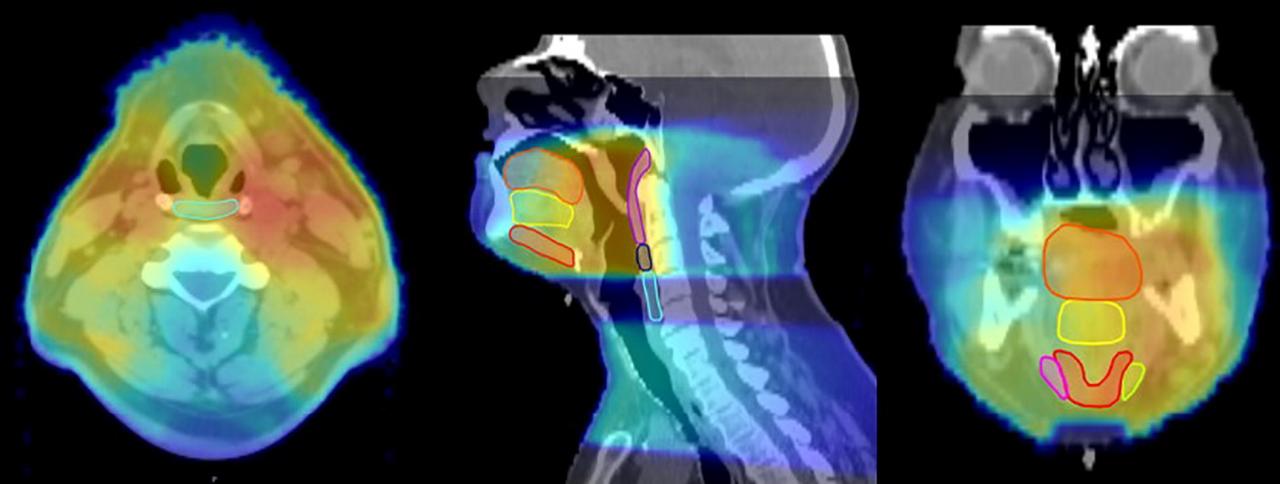|
|
||||||||||||||||||
Chronic Radiation-Associated Dysphagia in Oropharyngeal Cancer Survivors: Towards Age-Adjusted Dose Constraints for Deglutitive Muscles
Authors: Christopherson, Ghosh, Mohamed, Kamal Jomaa, Gunn, Marai, Canahuate, El Halawani, Vock, Kalpathy-Cramer,, Dale, Messer, Garden, Frank, Lewin, Lai, Morrison, Phan, Gross, Ferrarotto, Weber, Rosenthal, Hutcheson, Fuller
Publication: Clinical and Translational Radiation Oncology, vol 18, pp. 16-22 Objectives: We sought to model chronic radiation-associated dysphagia (RAD) in patients given intensity-modulated radiation therapy (IMRT) for oropharyngeal squamous cell cancer (OPSCC) as a function of age and dose to non-target swallowing muscles. Methods: We reviewed 300 patients with T1-T4 N0-3 M0 OPSCC given definitive IMRT with concurrent chemotherapy. Chronic RAD was defined as aspiration or stricture on videoflouroscopy/endoscopy, gastrostomy tube, or aspiration pneumonia at >=12 months after IMRT. Doses to auto segmented regions of interest (ROIs; inferior, middle and superior constrictors, anterior and posterior digastrics, mylo/geniohyoid complex, intrinsic tongue, and gengioglossus) were obtained from DICOM-RT plans and dose-volume histograms. The probability of chronic RAD as a function of mean ROI dose, stratified by age (<50, 50–59, 60–69, or >=70 years), was estimated with logistic probability models and subsequent unsupervised nonlinear curves. Results: Chronic RAD was observed in 34 patients (11%). Age was a significant correlate of chronic RAD, both independently and with dose for all muscle groups examined. Distinct muscle-specific dose-response profiles were observed as a function of age (e.g., 5% of patients in their 50 s [but 20% of those 70 + ] who received 60 Gy to the superior constrictor had chronic RAD). This effect was stable across all observed muscle ROIs, with a false discovery rate-corrected p < 0.05, for all dose/muscle/age models, suggesting that including age as a covariate improves modeling of chronic RAD. Conclusions: Age at treatment moderates the probability of chronic RAD after chemo-IMRT for OPSCC, with aging muscles showing lower dose thresholds. Uniform dose constraints may not predict toxicity in older patients. Funding: NIH Award #NCI-R01CA225190: QuBBD: Precision E –Radiomics for Dynamic Big Head & Neck Cancer Data (Marai, PI) NIH, National Cancer Institute #1R01CA214825-01: SMART-ACT: Spatial Methodologic Approaches for Risk Assessment and Therapeutic Adaptation in Cancer Treatment (Marai, PI) Date: September 1, 2019 Document: View PDF |